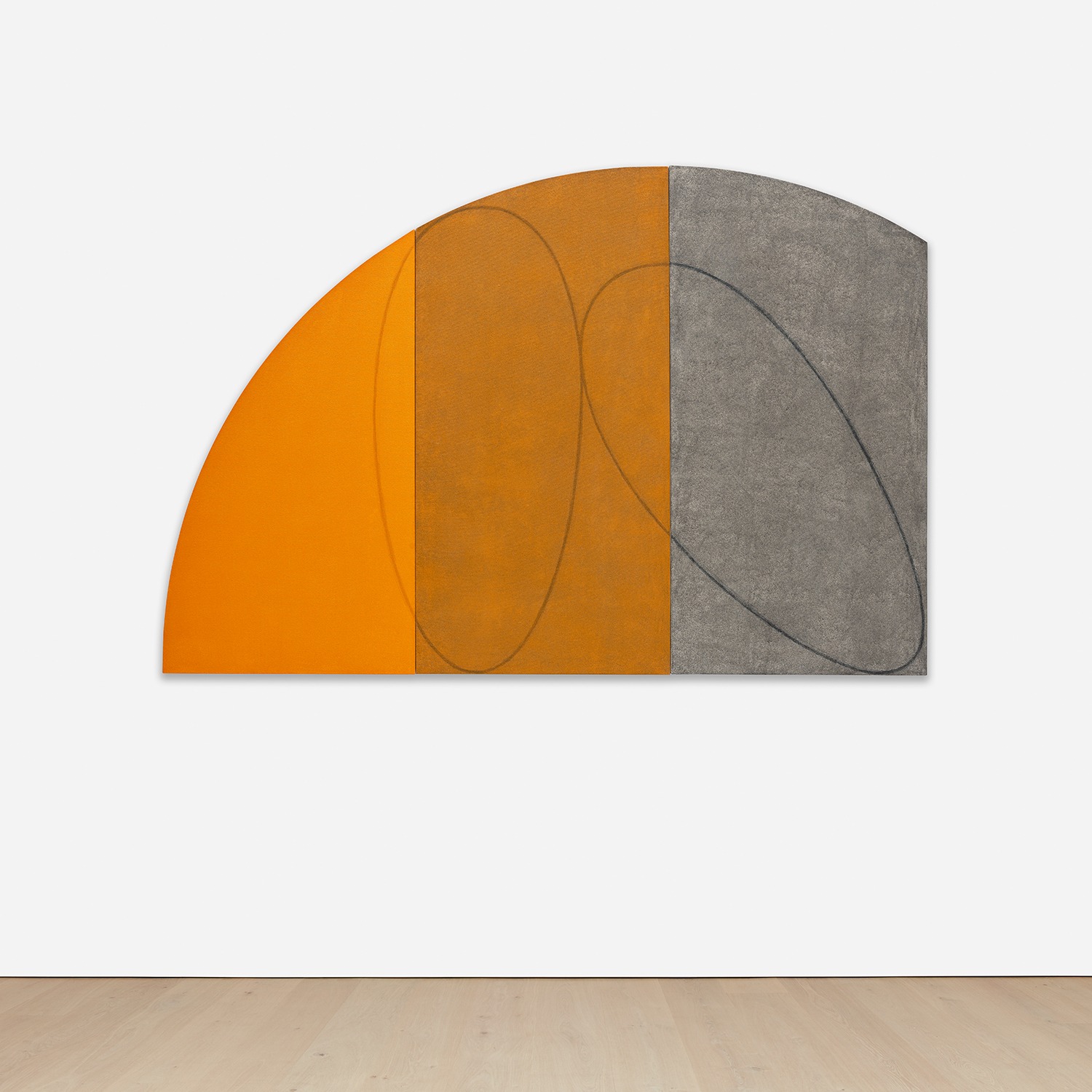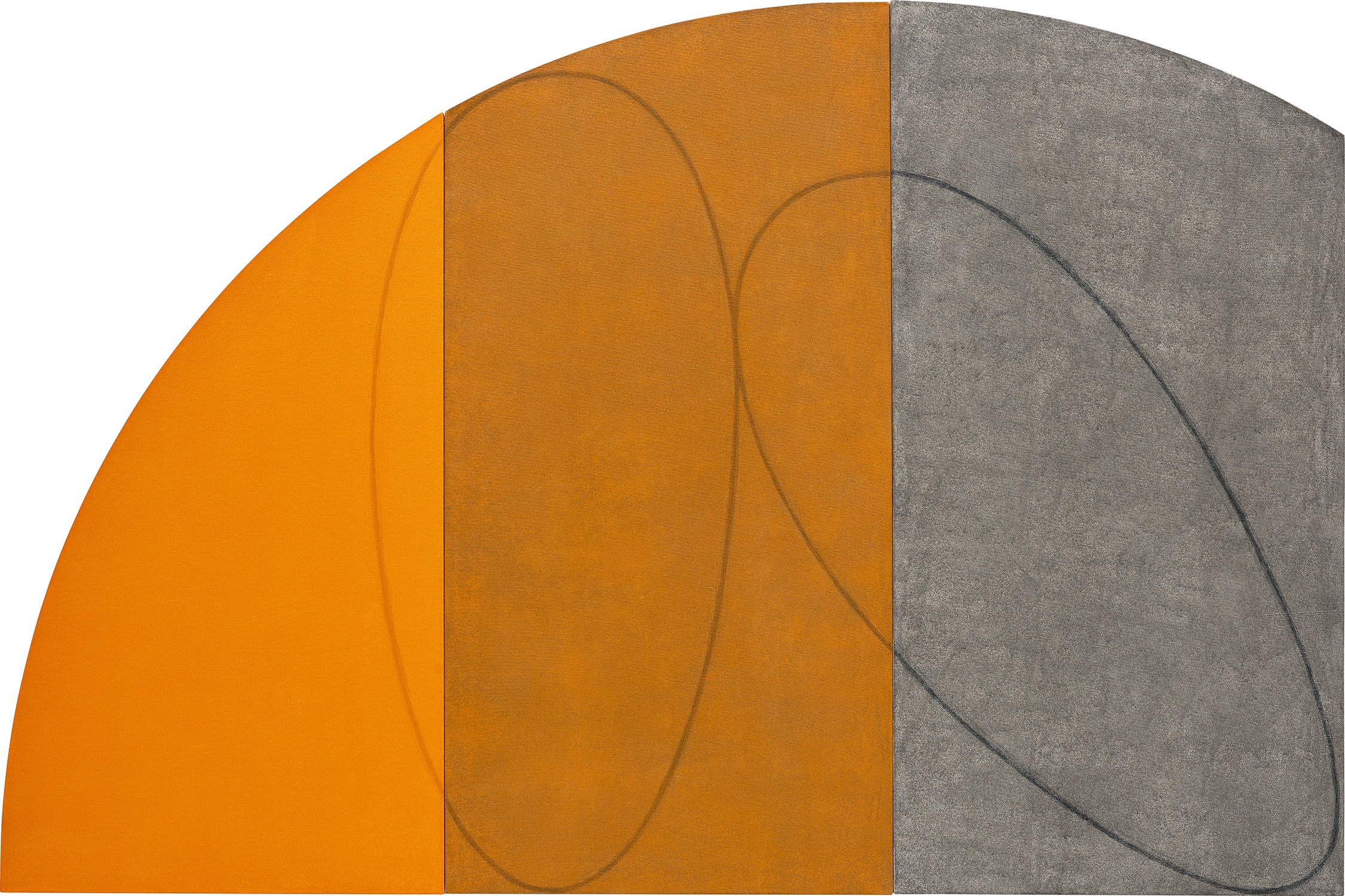



134
Robert Mangold
Curved Plane/Figure VIII, Study
signed, titled, inscribed and dated "CURVED PLANE/FIGURE VIII (STUDY) R. Mangold 1995 PANEL B" on the reverse of the central canvas; signed, partially titled, inscribed and dated "R. Mangold 1995 VIII PANEL [C, A]" on the reverse of the left and right canvases
acrylic, graphite and black pencil on canvas, in 3 parts
48 7/8 x 73 3/4 in. (124.1 x 187.3 cm)
Executed in 1995.